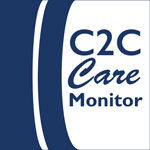Newbie Looking for Care Advice for Silver and Leather
Tagged: silver
- This topic has 3 replies, 3 voices, and was last updated 8 years, 1 month ago by
Leslei Fisher.
-
AuthorPosts
-
-
February 29, 2016 at 11:11 am #134460
Leslei Fisher
ParticipantHello! I’ve just become a member of the Museum community (background in education and printing) and am charged with 12,000 plus cowboys of film and television artifacts that have not been carefully cared for or even cataloged (but that’s a whole ‘nother post). I have a Rodeo Saddle from the 1940s/50s that is on display on a fiberglass life-size horse. The leather is drying and the silver tarnished. Do I clean it? Since it is exposed to open air, the silver will just tarnish again–is it better to leave it alone? The silver conchos can’t be removed from the saddle for cleaning so it’s a delicate task to say the least…and then there’s the leather–it has a medium amount of embossing/tooling. What if anything can I use on it to preserve it and keep it in good condition? Thanks so much!
-
February 29, 2016 at 5:24 pm #134461
 Lindsay SchettlerParticipant
Lindsay SchettlerParticipantHi Leslei!
This sounds like quite the adventure!
The mixed material aspect makes this that much more interesting. I would definitely look into speaking with a metal conservator, especially if this is a high priority piece in the museum collection. That being said, if you were to clean it, silver metal will be removed with the tarnish unfortunately. I found that the Bishop Museum’s conservation handout on caring for silver to be informative. I do not feel comfortable telling you if cleaning and polishing is safe or what those supplies are but I can provide you with some useful resources I found through a quick search:
https://www.thehenryford.org/collections-and-research/digital-resources/caring-for-artifacts/
http://www.vam.ac.uk/content/articles/s/silver-conservation/
http://www.hermansilver.com/care.htmAs for leather, there was a webinar about caring for leather via C2C:
That being said, do you have an environmental monitoring program in place? I would advise you to look into gaseous pollutants monitoring to understand the risks of displaying the piece permanently and without a protective case. Getty Conservation Institute has some great resources regarding this monitoring system. Climate control is another piece to this program that may reduce or slow the process of deterioration.
Best of luck! I hope there will be some more insight for you.
Best, Lindsay
-
March 2, 2016 at 8:55 pm #134463
 Mary Ann GabrielParticipant
Mary Ann GabrielParticipantLeslei,
I would recommend that you document the present condition of each object before you do anything with it. If you do not document the current condition of your neglected collection, you will not be able to convince the governing body of your institution that benign neglect is in fact very harmful. Take close-up photos of any particular damage such as cracking of the leather, any loose or missing parts, or accumulation of dust or dirt. Use a color scale to document leather and fabric colors. Anything you or anyone else later does to the object should also become part of the object’s condition report, so take photos and notes during and after treating the object.
You can find examples and templates online and modify them as you need. This link includes the essentials of condition reporting.
Your focus should be preventive conservation, since you are not a trained conservator. That means taking steps to prevent further deterioration of the object, which is not to be confused with “making it look pretty.” If your governing body wants a particularly valuable item to look like new, they should hire a conservation or restoration specialist. Decline the suggestions of well-meaning folks who take care of modern working saddles. Saddle soap causes white waxy “blooms” on the old leather, which cannot be removed. Museum standards also recommend that any treatment to the object be reversible, in case some day conservators determine that the treatment was actually harmful.
I realize that these suggestions may complicate your already enormous task, but the long-term preservation of the object will be enhanced if you document, document, document!
Best,
Mary Ann -
March 11, 2016 at 2:38 pm #134474
Leslei Fisher
ParticipantWow! Thank you Lindsay and Mary Ann! Just goes to show how much I don’t know! sigh But I am finding BOTH of your comments and suggestions to be very helpful! Yes, documentation does seem to be very vital. And my first step in environmental control is a simple thing–central heat and air! All our problems are solved with money it seems, aren’t they? (smile)
-
-
AuthorPosts
- The forum ‘Connecting to Collections Care Forum Archives – 2015 through 2018’ is closed to new topics and replies.




